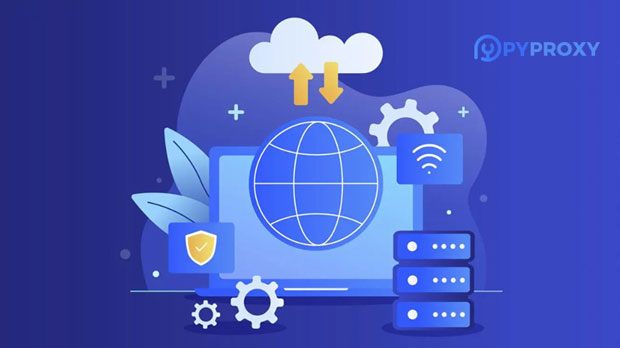In today’s digital age, internet users often face geo-restrictions when trying to access certain content, services, or websites. These restrictions are put in place by service providers, governments, or companies to limit access to specific regions. One effective solution to bypass these barriers is using a socks5 proxy. socks5 proxies are a popular choice for users who need to access restricted content by masking their IP address and routing traffic through remote servers. This article explores how purchasing a SOCKS5 proxy can help resolve geo-restriction issues, the benefits it offers, and how to effectively use it for enhanced internet access. What Are Geo-Restrictions and Why Do They Exist?Geo-restrictions are limitations imposed on online content based on the user's geographical location. These restrictions can prevent access to websites, video streaming platforms, news outlets, and more, depending on the region from which the user is accessing them. Geo-restrictions can be enforced for various reasons, including:1. Licensing and Copyright: Certain content, especially movies, TV shows, or streaming services, may have licensing agreements that restrict access to specific countries or regions.2. Government Regulations: In some cases, governments implement restrictions on internet content to control the flow of information or maintain national security.3. Market Targeting: Companies may offer different content or pricing based on regional marketing strategies or consumer behavior, limiting access to their offerings in certain locations.4. Censorship: Some countries censor content for political or cultural reasons, blocking access to sites that do not align with the country's values or policies.Geo-restrictions can be frustrating, especially for users who need to access specific websites or services unavailable in their region.What is a SOCKS5 Proxy?A SOCKS5 proxy is a protocol that routes internet traffic through a third-party server, effectively masking the user’s original IP address and providing a new one based on the server's location. SOCKS5, which stands for "Socket Secure version 5," is the most advanced version of the SOCKS protocol, offering various benefits over its predecessors, such as enhanced security, faster performance, and greater flexibility.Unlike HTTP proxies, which only handle web traffic (i.e., browsing), SOCKS5 proxies can route traffic from any application, including torrents, messaging services, and even gaming platforms. This makes SOCKS5 proxies highly versatile for users who need to bypass geo-restrictions across different types of online activities.How Does a SOCKS5 Proxy Bypass Geo-Restrictions?A SOCKS5 proxy helps bypass geo-restrictions by allowing users to choose the location of the server through which their traffic is routed. Here’s how the process works:1. IP Masking: When you connect to a SOCKS5 proxy, your IP address is replaced with that of the proxy server. This means that websites and services will only see the proxy’s IP address, not your actual location.2. Access Content from Any Location: By selecting a proxy server located in a different country or region, you can access content that is otherwise restricted to users from that specific area. For example, if a video streaming service is only available in the US, a user in another country can use a SOCKS5 proxy located in the US to access that content.3. Anonymous Browsing: Since your real IP address is hidden, you can browse the internet without worrying about being tracked by websites, marketers, or other third parties.4. Bypassing Censorship: In countries with strict internet censorship, using a SOCKS5 proxy allows users to access blocked websites by routing traffic through a server in a country with no such restrictions.Thus, by purchasing a SOCKS5 proxy, users can effectively overcome geo-restrictions, bypass censorship, and access the internet freely.Advantages of Using SOCKS5 Proxies for Geo-Restrictions1. Bypass Geographic Content Blocks: As mentioned, SOCKS5 proxies help users access content that is blocked based on their geographic location. This is particularly beneficial for streaming services like Netflix, Hulu, and BBC iPlayer, which limit content availability based on country-specific licensing deals. 2. Improved Privacy and Anonymity: SOCKS5 proxies offer a higher level of privacy and security compared to regular HTTP proxies. Since they don’t modify the data packets in transit, they are more reliable for maintaining anonymity. This is crucial for users who want to protect their identity or keep their browsing activity private. 3. Supports Multiple Protocols and Applications: Unlike traditional proxies that only work for web traffic, SOCKS5 proxies support a wide range of protocols, making them versatile for many applications beyond just browsing. This includes torrenting, gaming, and using VOIP services.4. Faster Performance: SOCKS5 proxies are generally faster than other types of proxies, especially when used for activities like streaming or downloading large files. The protocol does not require additional overhead for encryption (though it supports encryption), which contributes to faster speeds.5. No Traffic Limitation: SOCKS5 proxies do not restrict the types of traffic you can send through them, which makes them ideal for users who need to access various types of online services. Whether it’s peer-to-peer file sharing or accessing geographically restricted video streams, SOCKS5 proxies can handle it all.How to Choose and Use a SOCKS5 Proxy to Solve Geo-RestrictionsWhen selecting a SOCKS5 proxy to bypass geo-restrictions, there are several factors to consider:1. Location of Servers: Choose a provider with servers in the regions where you need to access content. For example, if you want to access US-only content, make sure the proxy provider offers servers located in the United States. 2. Speed and Reliability: It’s crucial to select a SOCKS5 proxy provider that offers fast, stable connections. Slow proxy servers can lead to buffering or poor user experiences, especially when streaming video or playing online games. 3. Security Features: Ensure that the SOCKS5 proxy provides encryption and other security features if you require them. While SOCKS5 itself does not encrypt traffic by default, some providers offer optional encryption to add an extra layer of privacy. 4. Compatibility: Confirm that the proxy is compatible with the specific software or service you wish to use. SOCKS5 proxies work with a wide range of applications, but you should double-check compatibility for tasks like torrenting or gaming. 5. Cost: While SOCKS5 proxies are generally affordable, prices may vary depending on the provider, server locations, and additional features. Look for a plan that suits your needs and budget.ConclusionIn summary, purchasing a SOCKS5 proxy is an effective and reliable way to solve geo-restriction problems. Whether you want to access content from a different country, protect your online privacy, or bypass censorship, SOCKS5 proxies offer a versatile and efficient solution. By choosing a suitable provider and server location, you can unlock a wealth of online content and ensure a more secure and unrestricted internet experience.
Jan 09, 2025
![arrow]()



















































